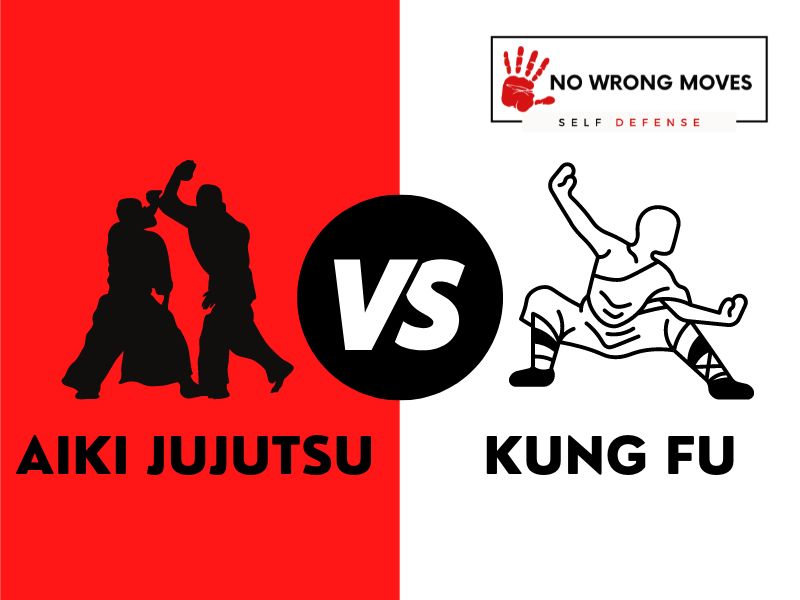
- What We Know About Aiki Jujutsu
- What We Know About Kung Fu
- Aiki Jujutsu Rankings & Levels
- Kung Fu Rankings & Levels
- Aiki Jujutsu Vs. Kung Fu Attire
- What A Typical Aiki Jujutsu Training Session Looks Like
- What A Typical Kung Fu Training Session Looks Like
- Aiki Jujutsu Movies
- Kung Fu Movies
- Conclusion: Aiki Jujutsu Vs. Kung Fu
Today, we are going to end the long-standing debate of Aiki Jujutsu Vs. Kung Fu! People (especially those online) go back on forth on which discipline is better.
Some say that Aiki Jujutsu is more fluid and instinctive, while others argue that Kung Fu is more powerful and straightforward. So which is it, and why?
Well...
The main differences between aiki jujutsu and kung fu are:
- Aiki jujutsu is a martial art that uses the principles of softness and blending with the opponent's movements to redirect their force and then use that redirected force against them.
Kung fu, on the other hand, typically relies on strength and power to overcome an opponent.
- Aiki jujutsu focuses on using throws, joint locks, and pins to control or incapacitate an opponent, while kung fu typically relies more on kicks and punches to strike an opponent.
- Aiki jujutsu emphasises relaxation and breath control, while kung fu typically favors speed, power, and intensity.
Overall, aiki jujutsu and kung fu are both effective martial arts styles, but they have different approaches and techniques. It is up to the individual practitioner to decide which style suits their goals and preferences. But let's make some more comparisons to help you decide.
What We Know About Aiki Jujutsu
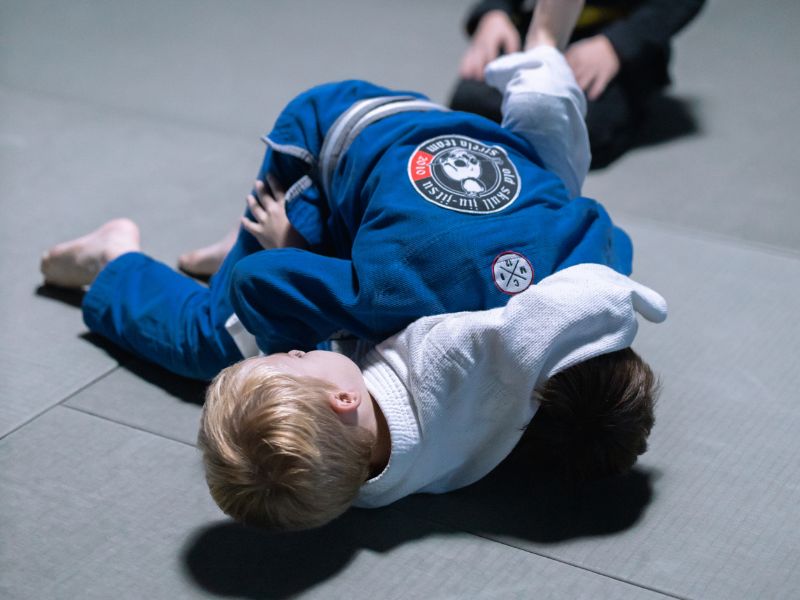
Aiki Jujutsu utilizes harmonizing an opponent's energy with your own internal energy in order to redirect it according to your needs. This is done by blending with the force instead of colliding with it, which would stop it in its tracks.
A practitioner of Aiki Jujutsu uses the striking and evasive techniques of Kempo-Jutsu to position their body close to their opponent before following with linear, diagonal or circular movements to redirect the opponent's energy.
The throwing techniques of Aiki Jujutsu are almost completely dependent upon the Atemi of Kempo-Jutsu. In some cases, with masterful skill, the practitioner can apply Aiki Jujutsu throwing techniques by blending with their opponent's energy.
In most cases, applying an appropriate Aiki Jujutsu throwing technique will disrupt the opponent's balance and send them flying.
The history of Aiki Jujutsu can be traced back to the Shinmei-ryu school of swordsmanship founded by Takenouchi Hisamori in the early 1600s. One of Hisamori's students, Takeda Sokaku, is credited with developing Aiki Jujutsu from the techniques he learned from Hisamori.
Sokaku passed on his knowledge to his son, Takeda Tokimune, who continued to teach and develop the art until his death in 1943.
Morihei Ueshiba continued to develop the art, creating Aikido, a modernized version of Aiki Jujutsu.
Aiki Jujutsu can still be used for self-defense or as a form of physical and mental exercise. It teaches control over one's own body and mind as well as efficiently using an opponent's energy against them.
What We Know About Kung Fu
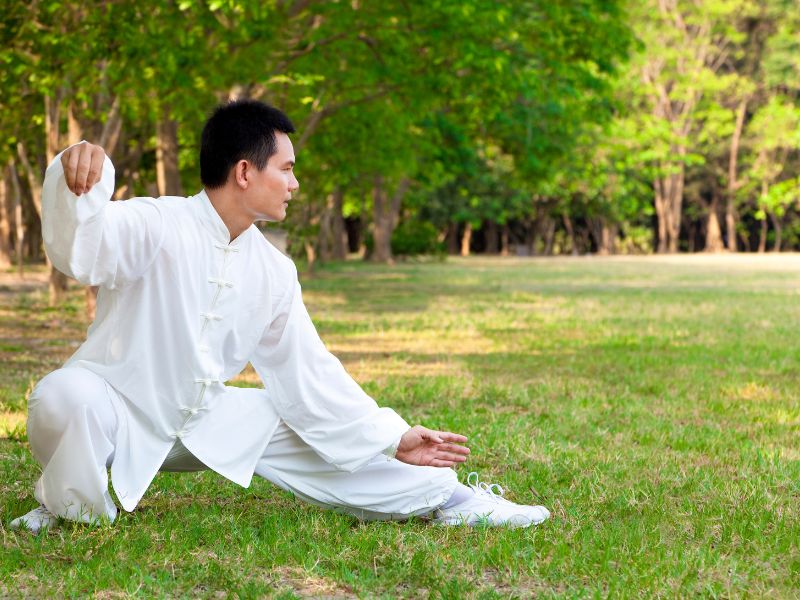
Kung Fu is an ancient martial art form with a long and rich history. It's a system of training that includes physical exercises and techniques such as punches, kicks, and blocks, as well as mental and spiritual practices.
Kung Fu is often associated with Chinese culture, but it is also practiced in other countries around the world. The origins of Kung Fu date back centuries, and the art form has been used for self-defense and combat. In recent years, Kung Fu has gained popularity as a form of exercise and fitness, as well as a way to learn self-defense.
There are many different styles of Kung Fu, each with its own unique set of techniques and skills. So whether you're interested in learning self-defense or simply want to get fit, Kung Fu will always be an excellent option.
Of course, this is only a brief history and understanding of Aiki Jujutsu and Kung Fu, but if you want to go deeper into either art, be sure to check out the following posts:
Now, back to the comparison...
Let's look at the origins of the respective disciplines and then compare the key elements of their practices. You will be able to understand some of their similarities and differences a bit better afterward.
| Aiki Jujutsu | Kung Fu | |
| Origins | Japanese | Chinese |
Another thing I think is important to look at is the different rankings and levels in each art. if you are looking to take up either Aiki Jujutsu or Kung Fu, whether as a hobbyist or to compete, you need to understand the different levels of proficiency and what is required for testing and ranking.
Aiki Jujutsu Rankings & Levels
For beginners, there is the 10th Kyu White Belt. This signifies that the student is just starting their journey in Aiki Jujutsu.
As they progress, they will move on to be a 9th Kyu White Belt with Yellow Stripe, which is earned after two or three months of training. The student will then move on to an 8th Kyu Yellow Belt, and so on.
The amount of time it takes to earn each belt will increase as the student becomes more experienced. Eventually, after years of training, the student will earn the coveted Black Belt.
There are several degrees of Black Belt in Aiki Jujutsu, with each degree requiring a certain amount of training time. Shodan-Ho (Junior Black Belt) is earned after 40 to 46 months of training, while the first degree Black Belt, Shodan, is earned after 42 to 48 months.
The higher degrees of Black Belt, Nidan (2nd Degree), Sandan (3rd Degree), and Yondan (4th Degree), require even more years of training.
Here's a handy table to help you understand things better:
| Rank | Color |
| 10th Kyu | White |
| 9th Kyu | White |
| 8th Kyu | Yellow |
| 7th Kyu | Blue |
| 6th Kyu | Green |
| 5th Kyu | Green |
| 4th Kyu | Purple |
| 3rd Kyu | Brown |
| 2nd Kyu | Brown |
| 1st Kyu | Brown |
| Shodan-Ho | Black |
| Shodan | Black |
| Nidan | Black |
| Sandan | Black |
| Yondan | Black |
| Godan | Black |
Kung Fu Rankings & Levels
The Shaolin Kung Fu ranking system is based on a series of colored belts that denote a practitioner's level of expertise. The colors and corresponding ranks are white belt, yellow belt, blue belt, green belt, 3rd degree brown belt, 2nd degree black belt, and 1st degree black belt.
In order to advance in rank, a practitioner must pass a test that demonstrates their proficiency in the techniques and concepts of their current belt level.
White belts are at the beginning of their martial arts journey and have little to no experience. They learn the basic techniques and concepts of Shaolin Kung Fu and must demonstrate proficiency in order to advance to the next level.
Yellow belts have learned the basic techniques and concepts of Shaolin Kung Fu and are now ready to begin learning more advanced techniques. They must demonstrate proficiency in order to advance to the next level.
Blue belts have learned the basic techniques and concepts of Shaolin Kung Fu and are now ready to begin learning more advanced techniques.
They must demonstrate proficiency in order to advance to the next level. In addition, blue belts are required to learn how to defend themselves against common attacks, such as punches, kicks, and grabs.
Green belts have learned the basic techniques and concepts of Shaolin Kung Fu and are now ready to begin learning more advanced techniques. They must demonstrate fairly considerably proficiency in order to advance to the next level.
Next up, brown belts have learned more than their fair share of the basic techniques and concepts of Shaolin Kung Fu and fairly well-versed even in some of the more advanced techniques.
Black belts are the highest rank in Shaolin Kung Fu and have mastered all techniques and concepts. They must continue to train and improve their skills in order to maintain their rank.
Black belts are required to learn advanced self-defense techniques, such as defending against weapons and fighting multiple attackers.
Aiki Jujutsu Vs. Kung Fu Attire
This section simply compares the clothing and uniforms that practitioners wear in combat.
Aiki Jujutsu Attire:
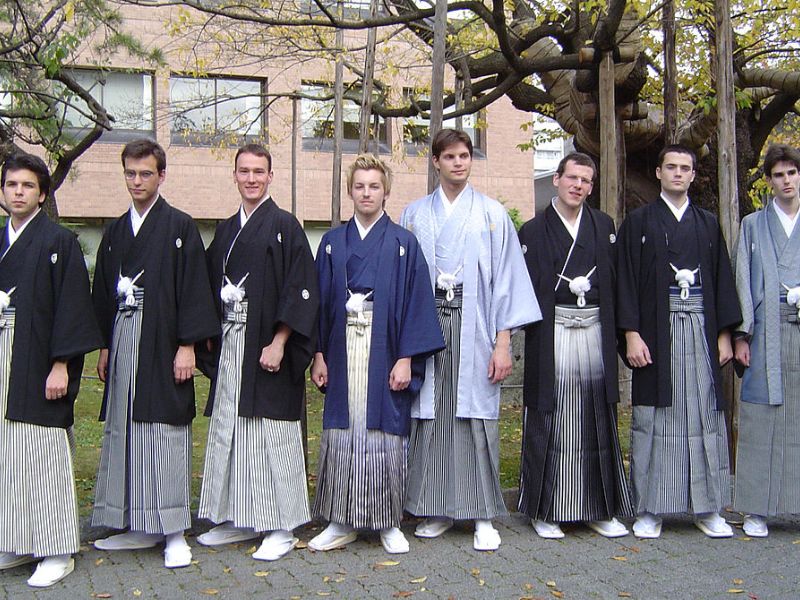
In terms of attire, Aiki Jujutsu practitioners typically wear a traditional dogi and hakama. This affords them better gripping and movement during techniques.
Kung Fu Attire:
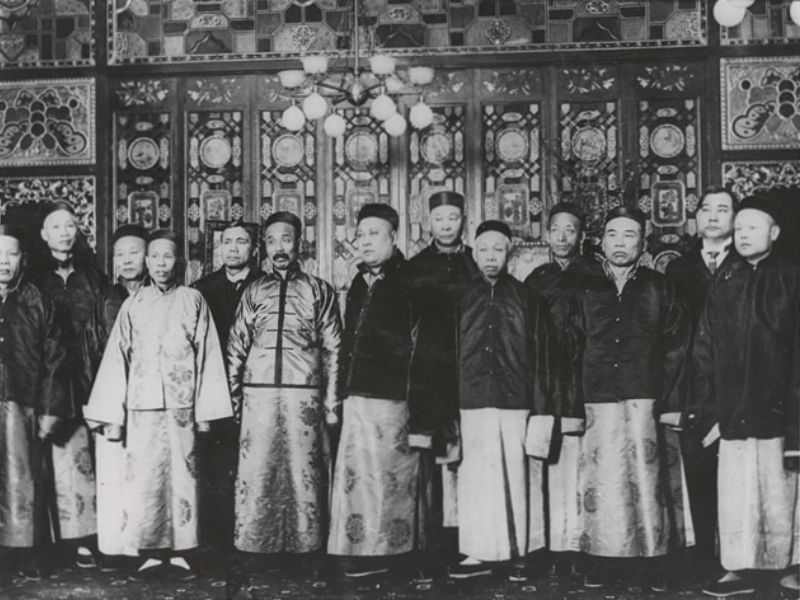
There isn't really a one-size-fits-all answer to this question. For the most part, the clothing worn by Kung Fu practitioners can vary depending on the particular style of Kung Fu being practiced.
But in general, Kung Fu practitioners may wear loose-fitting clothes that allow for a full range of motion. And while many people associate Kung Fu with traditional Chinese dress (e.g., qipao), practitioners may also wear more modern attire--if they prefer.
What A Typical Aiki Jujutsu Training Session Looks Like
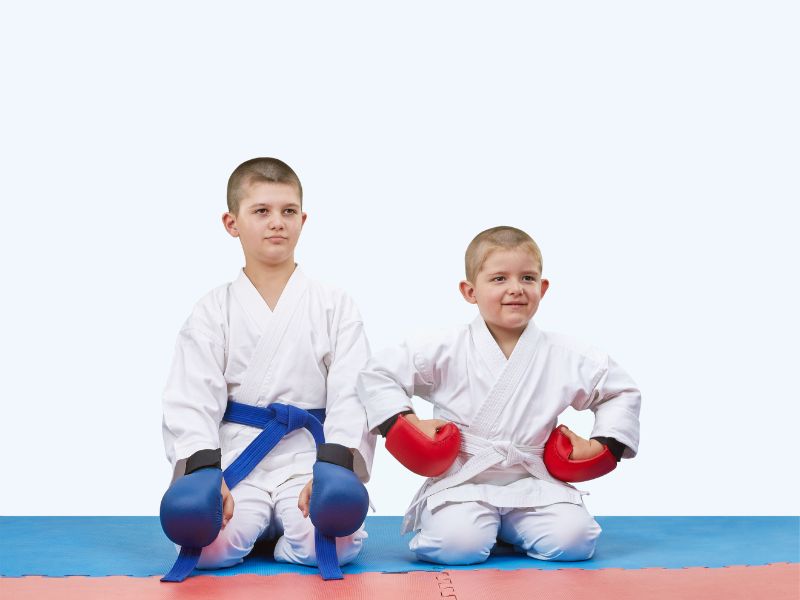
A typical Aiki Jujutsu practice session may start with a few minutes of warm-ups, such as joint rotations and light stretches. This is followed by practicing techniques, which may include throws, locks, and pins. The session usually ends with some relaxation exercises and a cool-down.
One of the most commonly used techniques in Aiki Jujutsu is the wristlock. This involves controlling an opponent's wrist and using their own momentum to throw them off balance.
In addition to physical technique, Aiki Jujutsu also emphasizes mental and spiritual development. This includes cultivating a strong mind-body connection and developing qualities such as patience and awareness.
What A Typical Kung Fu Training Session Looks Like

When you first arrive at a kung fu practice class, the instructor will have everyone go through a series of stretching and warm-up exercises.
This is crucial in order to help prevent injuries and to loosen up your muscles. The stretching and warm-up exercises will usually last for about 10 minutes.
After the stretching and warm-up exercises, the instructor will start to teach the class a kung fu form. Forms training is an important part of kung fu, as it helps to improve your balance, coordination, and flexibility. Forms training will usually last for about 20 minutes.
After forms training, the instructor will start to teach the class sparring techniques. Sparring training is important in order to learn how to properly defend yourself and to attack an opponent. Sparring training will usually last for about 30 minutes.
Once you're done with sparring training, the instructor will start to teach the class weapon techniques. Weapon training is important in order to learn how to properly use various kung fu weapons such as swords, knives, and sticks. Weapon training will usually last for about 20 minutes.
After weapon training, the instructor will have the class do some chi kung exercises. Chi kung (also spelled qigong) is a type of Chinese exercise that involves slow movements and deep breathing.
Chi kung exercises are said to help improve your health and increase your life energy (chi). Chi kung exercises will usually last for about 10 minutes.
After meditation, the instructor will have everyone do some cool-down exercises. Cool-down exercises are important in order to help your muscles recover from all of the activity during class. Cool-down exercises will usually last for about 5 minutes
If the last few sections have been a bit full-on or a bit too technical, you will like this next section! Why? Because who doesn't love a good martial arts flick?
Both Aiki Jujutsu and Kung Fu have been featured in a number of films and TV shows, so if you want to learn more about them, then entertain yourself with the following 👊
Aiki Jujutsu Movies

These are some of the top movies and shows with Aiki Jujutsu in them:
- The Bourne Identity (2002)
- Kill Bill: Volume 1 (2003)
- The Protector (2005)
- The Matrix Reloaded (2003)
- Ong Bak (2003)
- Daredevil (TV series, 2015-2018)
- The Wolverine (2013)
- Arrow (TV series, 2012-2020)
- John Wick (2014)
- 13 Assassins (2010)
- The Raid (2011)
In the movie Ong Bak (2003), the main character Ting, played by Tony Jaa, uses a combination of Muay Thai and Aiki Jujutsu to take down his opponents. Ting's Aiki Jujutsu techniques are evident in his use of joint locks and throws to neutralize his opponents' attacks and take them down.
In the TV series Daredevil (2015-2018), the main character, Matt Murdock, played by Charlie Cox, is a skilled martial artist who uses Aiki Jujutsu in his fights.
Murdock's Aiki Jujutsu techniques involve making full use of his incredibly enhanced sensory perception, utilizing opponents' momentum against them and redirecting their attacks.
In the movie The Wolverine (2013), the main character, Logan, played by Hugh Jackman, is shown using Aiki Jujutsu techniques in his fight scenes.
Logan's a mutant with supernatural abilities, but he still manages to use Aiki Jujutsu techniques, include using joint locks and throws, to take down his opponents with maximum efficiency.
In the TV series Arrow (2012-2020), the main character Oliver Queen, played by Stephen Amell, uses a variety of martial arts styles in his fight scenes, including Aiki Jujutsu.
Kung Fu Movies

Some great movies with Kung Fu are:
- The Karate Kid
- Kung Fu Panda (2008)
- Enter the Dragon (1973)
- Crouching Tiger, Hidden Dragon (2000)
- Kill Bill (2003)
In Kung Fu Panda, the protagonist, Po (voiced by Jack Black) is a giant panda who learns kung fu from a group of skilled martial artists known as the Furious Five. Other characters who use kung fu include the members of the Five: Tigress, Monkey, Mantis, Viper, and Crane.
In Enter the Dragon, the character of Lee (played by Bruce Lee) uses his own unique style of martial arts, which is based on Wing Chun and incorporates elements of kung fu, judo, and boxing.
Other characters in the movie, such as Roper and Williams, also use martial arts, but their styles are not explicitly identified.
In Kill Bill, the protagonist, Beatrix Kiddo (played by Uma Thurman) uses a combination of martial arts, including Kung Fu, Karate, and samurai sword fighting.
Other characters in the movie, such as O-Ren Ishii and Vernita Green, also use martial arts, but their styles are not explicitly identified.
Conclusion: Aiki Jujutsu Vs. Kung Fu
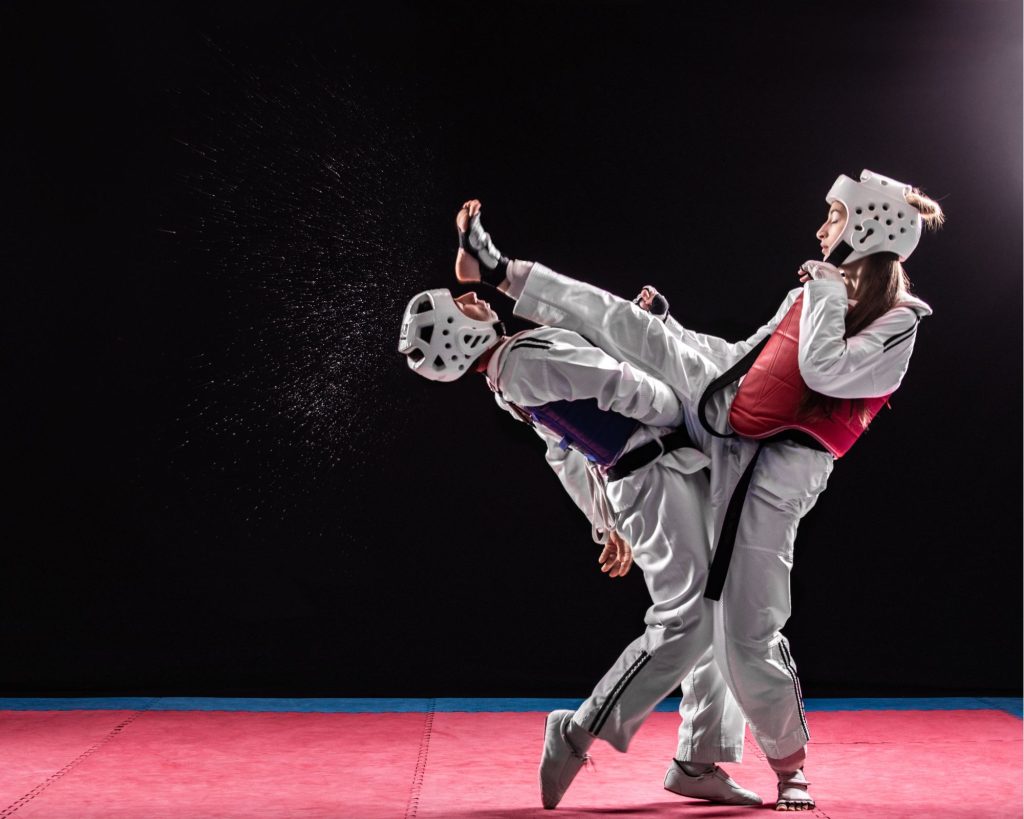
I hope you now have a deeper understanding of Aiki Jujutsu and Kung Fu. In all truth, it is not about which discipline is "better" as they each have their pros and cons.
If you do plan on starting classes for either, please check out my other related posts, as I have tried my best to answer all the FAQs related to the art.
Feel free to share this post and any graphics you like, and of course, if you have any questions or thoughts, drop them below or shoot me an email, and I will be happy to assist 🙂
Next up, check out how Aiki Jujutsu compares to Kyudo here!
[author-box-jpx-fitness]
